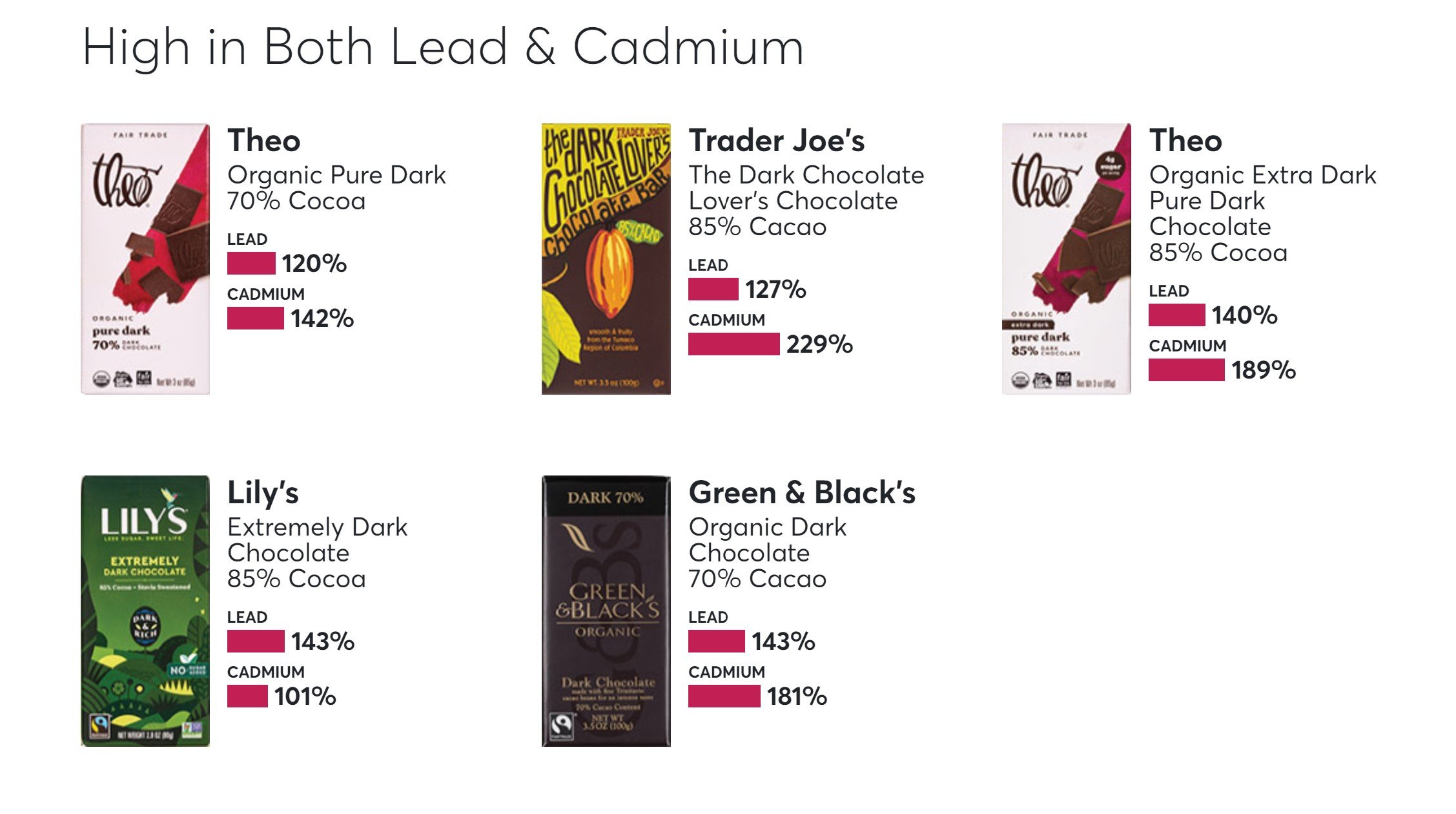Consumer safety 3rd party, Consumer Reports, recently tested a mix of large and small brand chocolate bars for toxic heavy metals cadmium and lead, and found that almost all of them contained potentially harmful levels of these metals in a single serving.
The research included large familiar brands like Dove, Lindt, and Godiva, as well as smaller organic bars like Beyond Good and Equal Exchange.
For 23 of the bars, eating just an ounce a day would put an adult over a level for at least one of those heavy metals that public health authorities and Consumer Report’s own guidelines say may be harmful, and 5 of those 23 showed harmful levels of both. The full list is available on the CR website here.
Cadmium and lead are dangerous even in microscopic amounts, but the ratio between exposure amounts and absorption amounts is debated. For example, spinach is regularly high in heavy metals like cadmium and lead, but also arsenic and mercury, but doesn’t seem to influence heavy metal absorption and poisoning in humans.
The effects however are well-documented. Children, pregnant women, and developing fetuses are particularly vulnerable to the effects of exposure to heavy metals, especially lead. But lead exposure is also harmful to adults, increasing their risk of high blood pressure, kidney damage, and infertility.
Kids exposed to lead often have problems with attention, hyperactivity, and mood. Several studies have found that lead exposure in children lowers intelligence. Children may also experience hearing loss and growth deficits and have problems with learning and reading. Pregnant women exposed to high levels of lead are more likely to experience a miscarriage, stillbirth, or premature birth or deliver small, underweight babies. There is no safe level of lead exposure for children and pregnant women.
Unfortunately, chocolate, especially dark chocolate, seems to be one of those foods that is more contaminated with heavy metals than others. It’s not only unfortunate because it’s delicious, but because dark chocolate is actually packed with important phytonutrients like flavonoids.
Is there a safer way to consume dark chocolate? Getting your particular favorite brand and bar tested would be the surest way to make sure you’re not consuming too many heavy metals, but finding out where the chocolate comes from might be a quicker solution.
If you think the stories you’ve just read were worth a few dollars, consider donating here to our modest $500-a-year administration costs.
Continue exploring this topic — Toxins — A Guide to Carcinogen Avoidance and Dietary Detoxing for the World Wanderer
Continue exploring this topic — Leafy Greens — We Should All Probably Eat More Parsley
Continue exploring this topic — Consumers — Tesco Fake Meat Advertisement Ruled Unsubstantiated and “Likely to Mislead”




